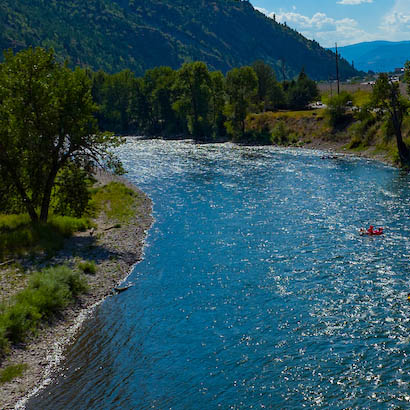Technical advances
Scientific motivation
More frequent and intense droughts and more severe storm and runoff events are already presenting new challenges for water managers. These challenges are compounded by economic and population growth. With current water supplies fully committed, and decreasing opportunities to develop new sources of sufficient quality, managers will need to improve the efficiency of existing water supplies to satisfy growing demands.
To achieve this, water managers and policymakers need to be able to anticipate how farmers will allocate land and water, and the impact of these decisions on agricultural water demands, agricultural productivity and farm profits. Unfortunately, most current operational water management tools do not incorporate farmers’ behavior because it is difficult to represent in models, and the calibration of these models rely on expensive field surveys. Another limitation of current operational water management tools is that they often neglect the spatially explicit and dynamic nature of human action, often assuming that the behavior of one farmer does not affect the choices of farmers downstream. However, upstream decision-making is likely to influence the availability of water for downstream uses and the ability of downstream farmers to adapt to climate change
We propose to overcome these and other limitations by leveraging our team's expertise to develop and calibrate a stakeholder-informed, innovative, and integrated hydro-economic model that incorporates recent technical advances.
Technical objectives
The core of our methodology relies on three major technical advances:
1) We exploit new satellite-based remote sensing methods and products to calibrate our hydro-economic model. Specifically, we propose to ingest remote sensing data into a positive mathematic programming (PMP; Howitt 1995) approach to capture previously underrepresented factors that influence farmer decision-making. This will allow us to operationalize a hydro-economic model that spans a wider geographic scope than previous studies, with the potential to move hydro-economic modeling from the watershed to the sub-continental scale.
2) We will implement a modeling approach based on recursive Bayesian inference that will permit us to evaluate the quality of the predictions based on the quality of the data (Maneta and Howitt 2014). It will also allow us to evaluate explicitly how changes in risk and uncertainty influence producer decision-making. This is a critical innovation given that the IPCC (2014) recently recognized that risk plays an important, and understudied, role in driving producer adaptation to climate change.
3) We will trace the effect of producer decision-making on regional hydrologic systems. This innovation allows us to understand how behavior affects the availability of water in the future, and also how the water-use decisions of individuals propagate through the hydrologic system to influence the behavior of downstream water users.
These innovations will advance hydro-economic modeling, overcome some of its current limitations, and allow us to develop new insight into how famers behave under resource and policy constraints at unprecedented spatial extents and spatio-temporal resolutions. The resulting model will contribute to the next generation of decision support tools used in water policy analysis. Our proposed decision support tool is poised for use as a continuous, operational policy support system because the response of farmers to changing conditions can be continually updated using recursive inference methods from frequently available remote sensing information. This tool will support improved policy analysis to decide how to use water resources, including where to invest in water development infrastructure, how to design adaptation pathways, how to estimate water value, and how to manage water banks and other water marketing tools.
System Integration
The figure below shows a schematic overview of how the different components of this project integrate to build a comprehensive analysis methodology. The methods are designed to run operationally such that the model parameters can be recursively updated to improve its performance as new information becomes available (left hand side of figure). At simulation and analysis time (right hand side of figure), the model with updated parameters is used in the integrated hydro-economic model to simulate changes in land allocated to each crop, amount of irrigation for surface and groundwater sources, net revenues, and the marginal value of land and water associated with design policy (or market) constraints. The coupled nature of the model also permits an analysis of the hydrologic effects such as accelerated depletion of recovery of groundwater, changes in the amount of agricultural effluents to streams, or changes in the timing and volume of stream flows.
